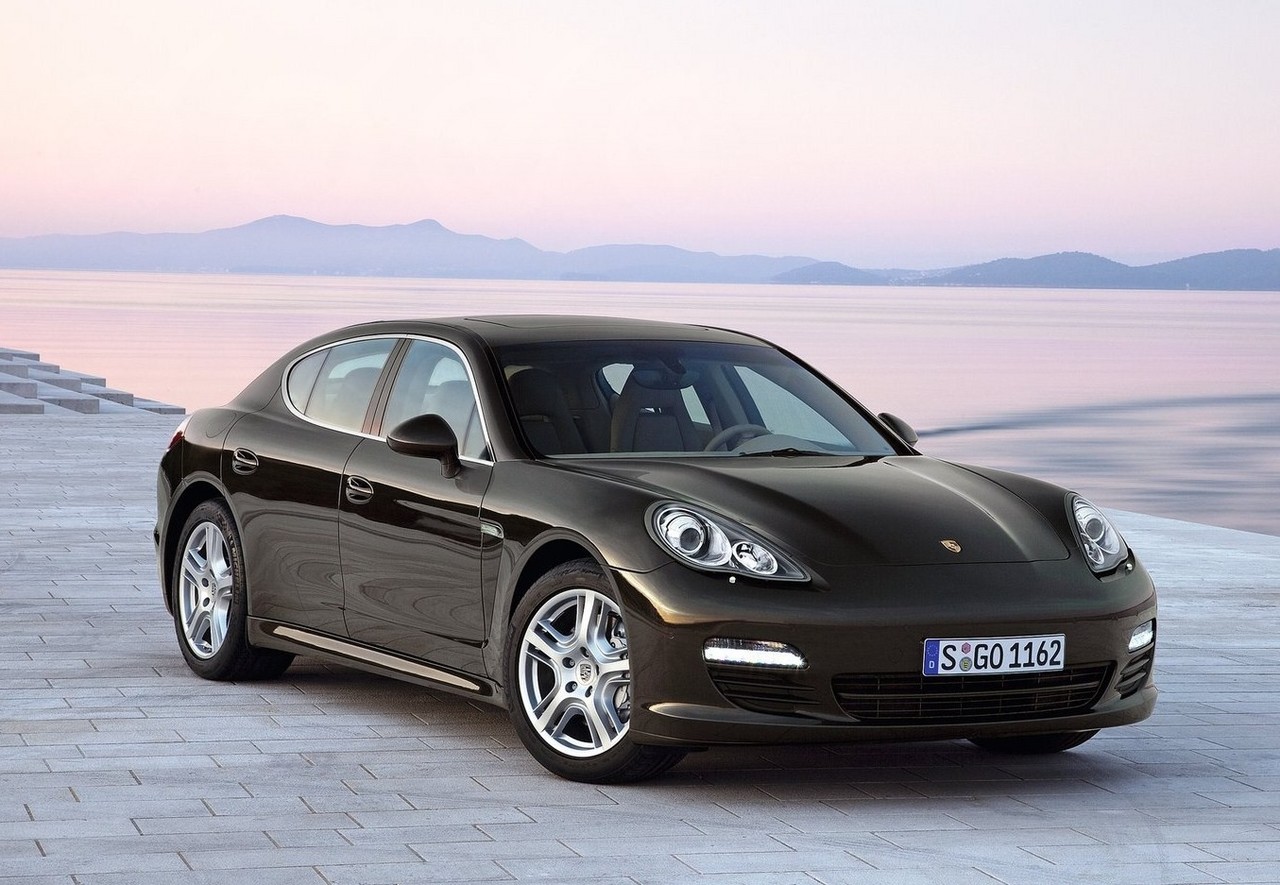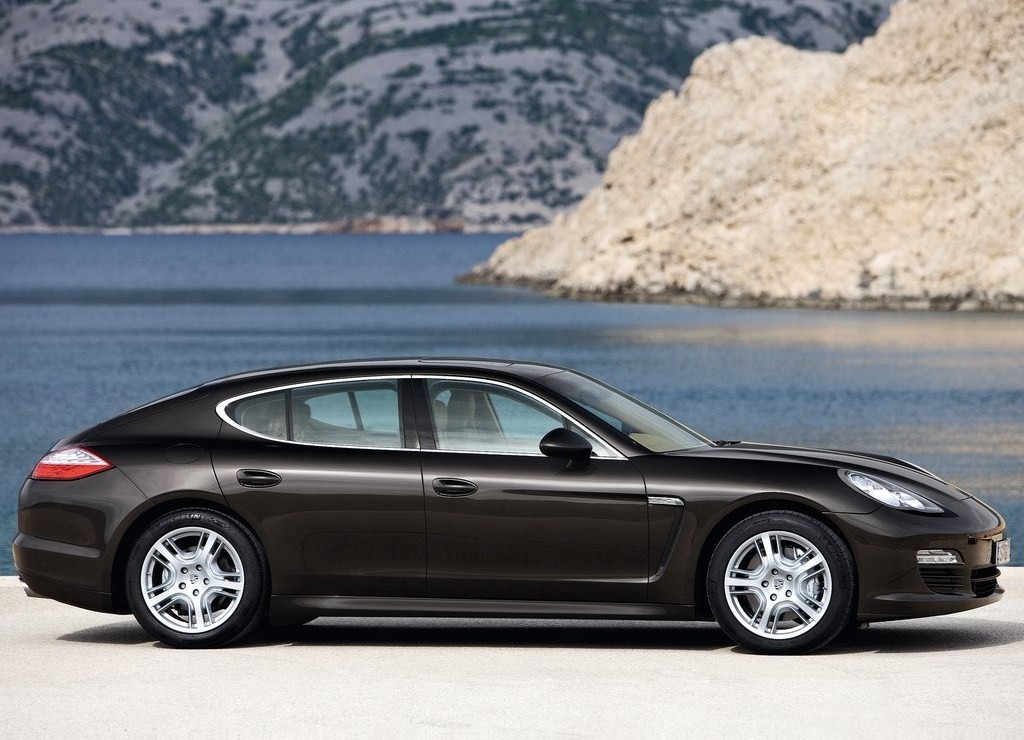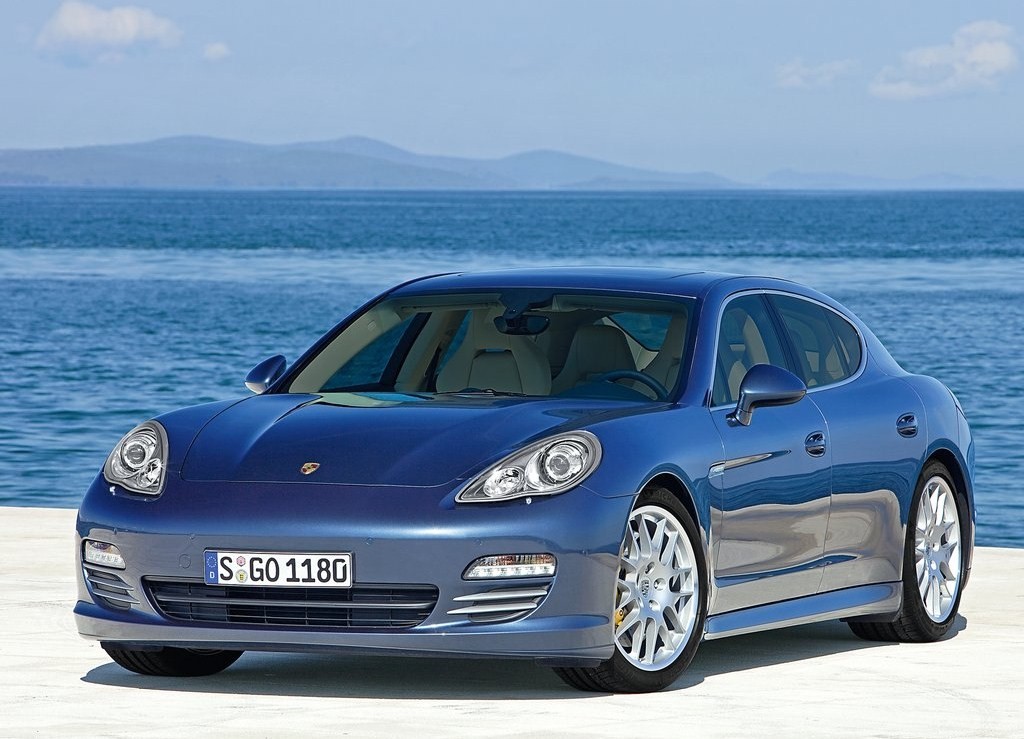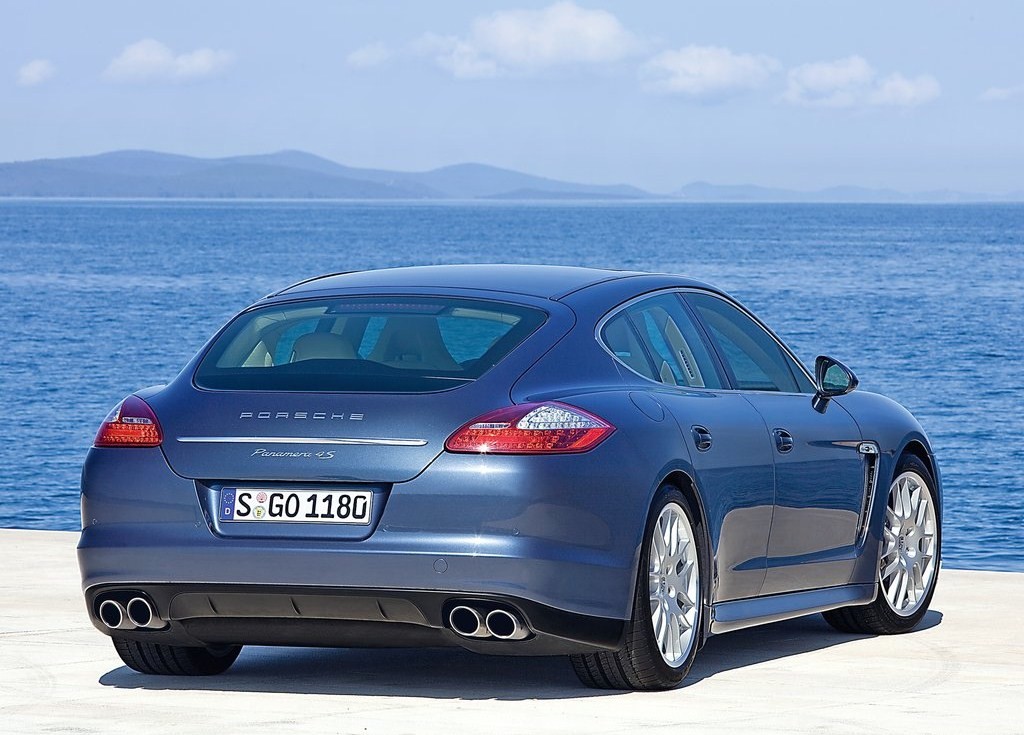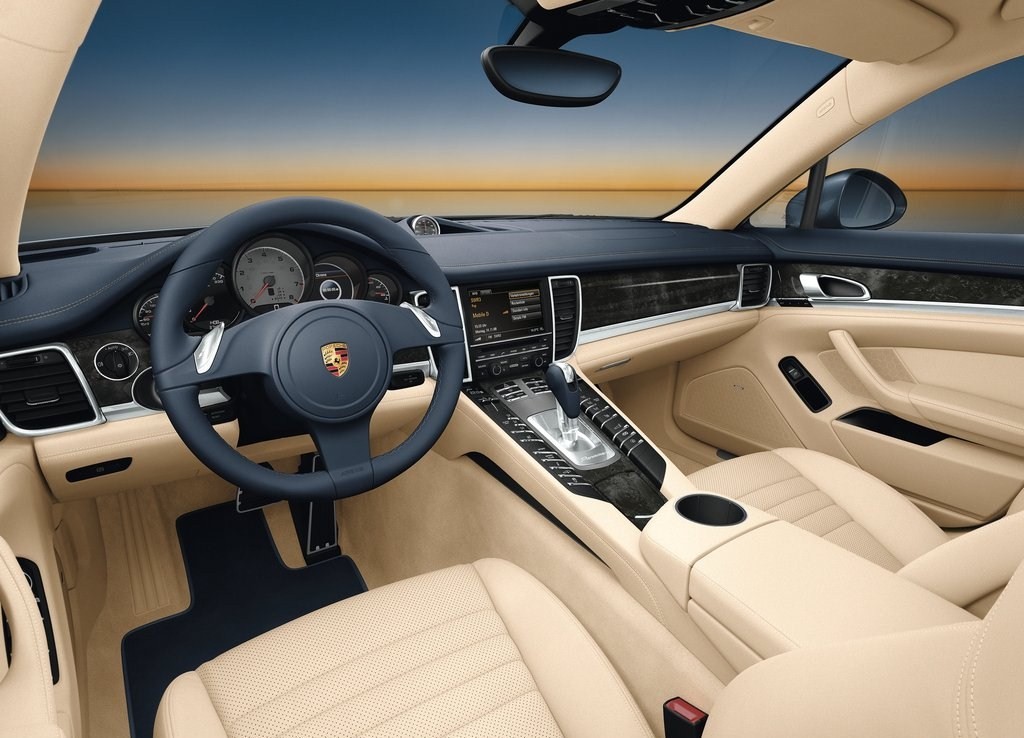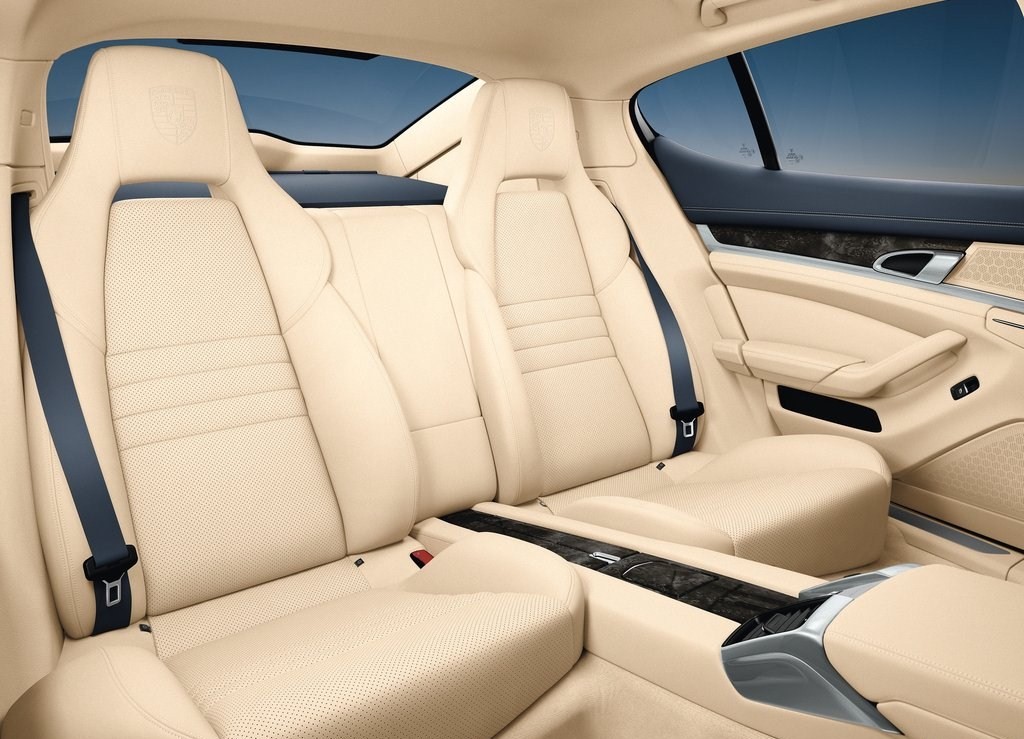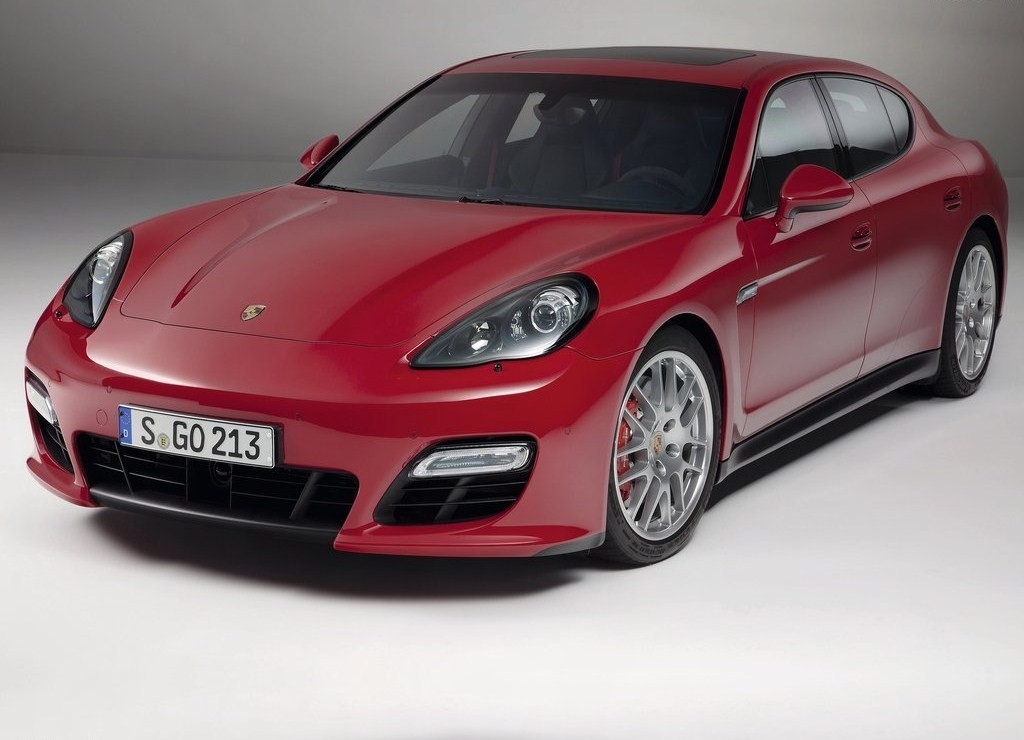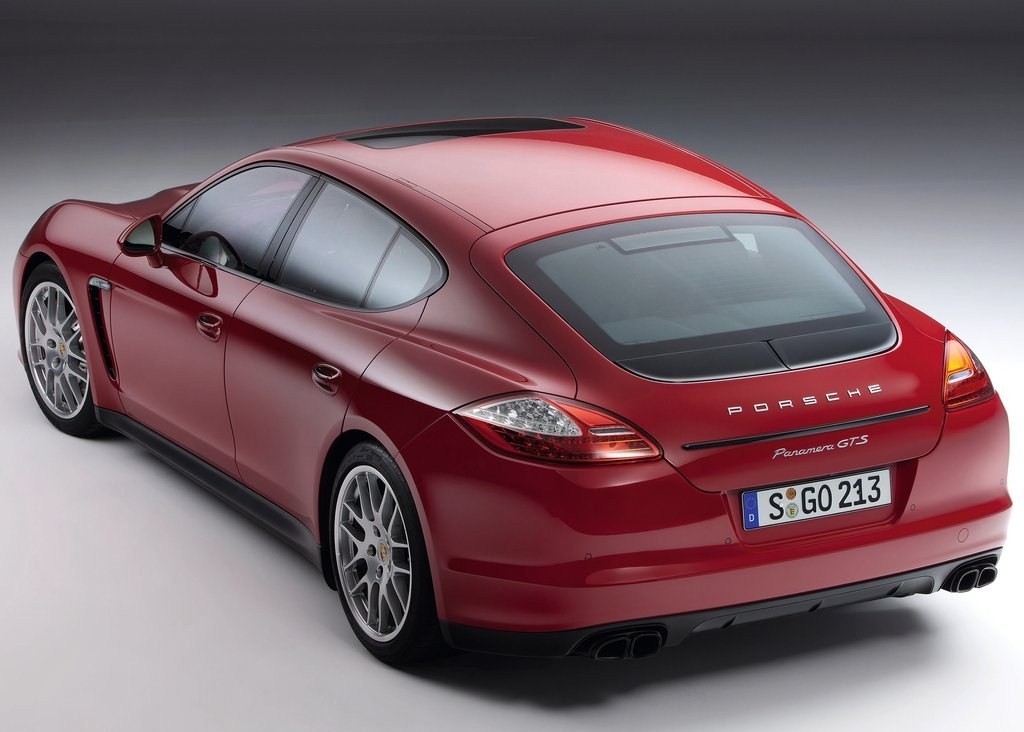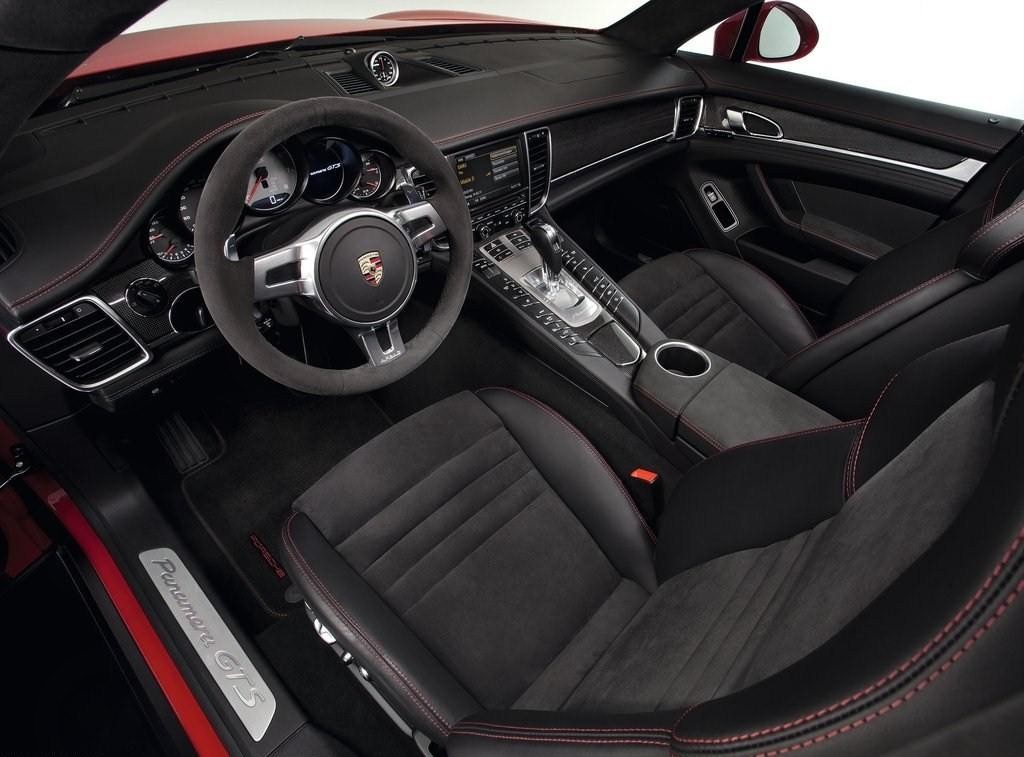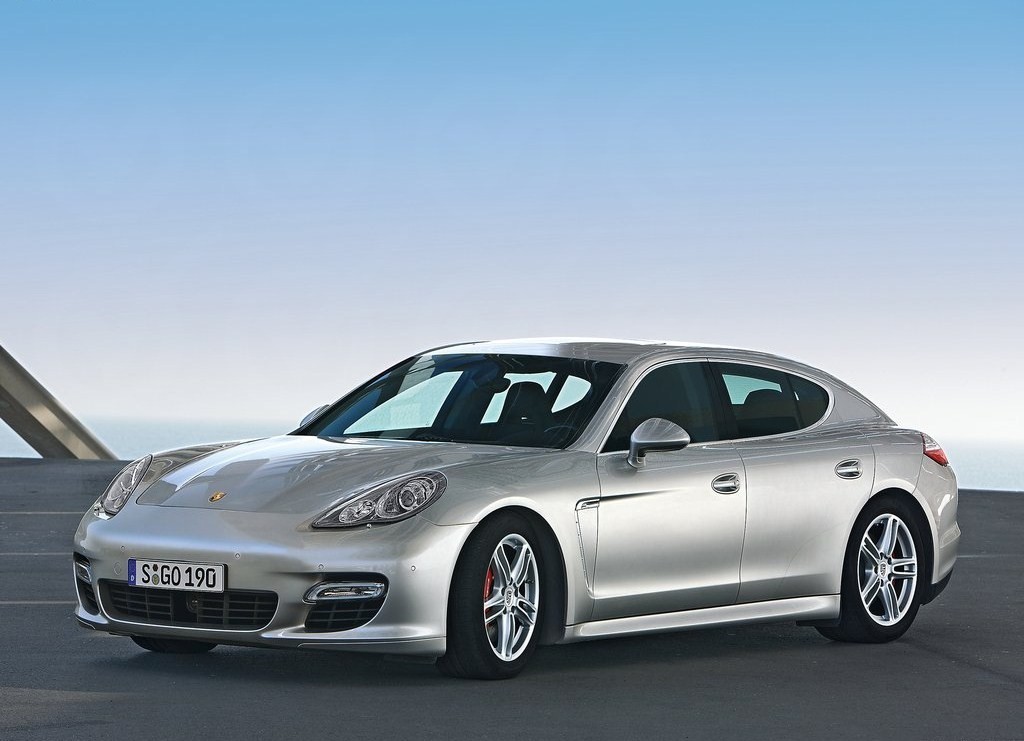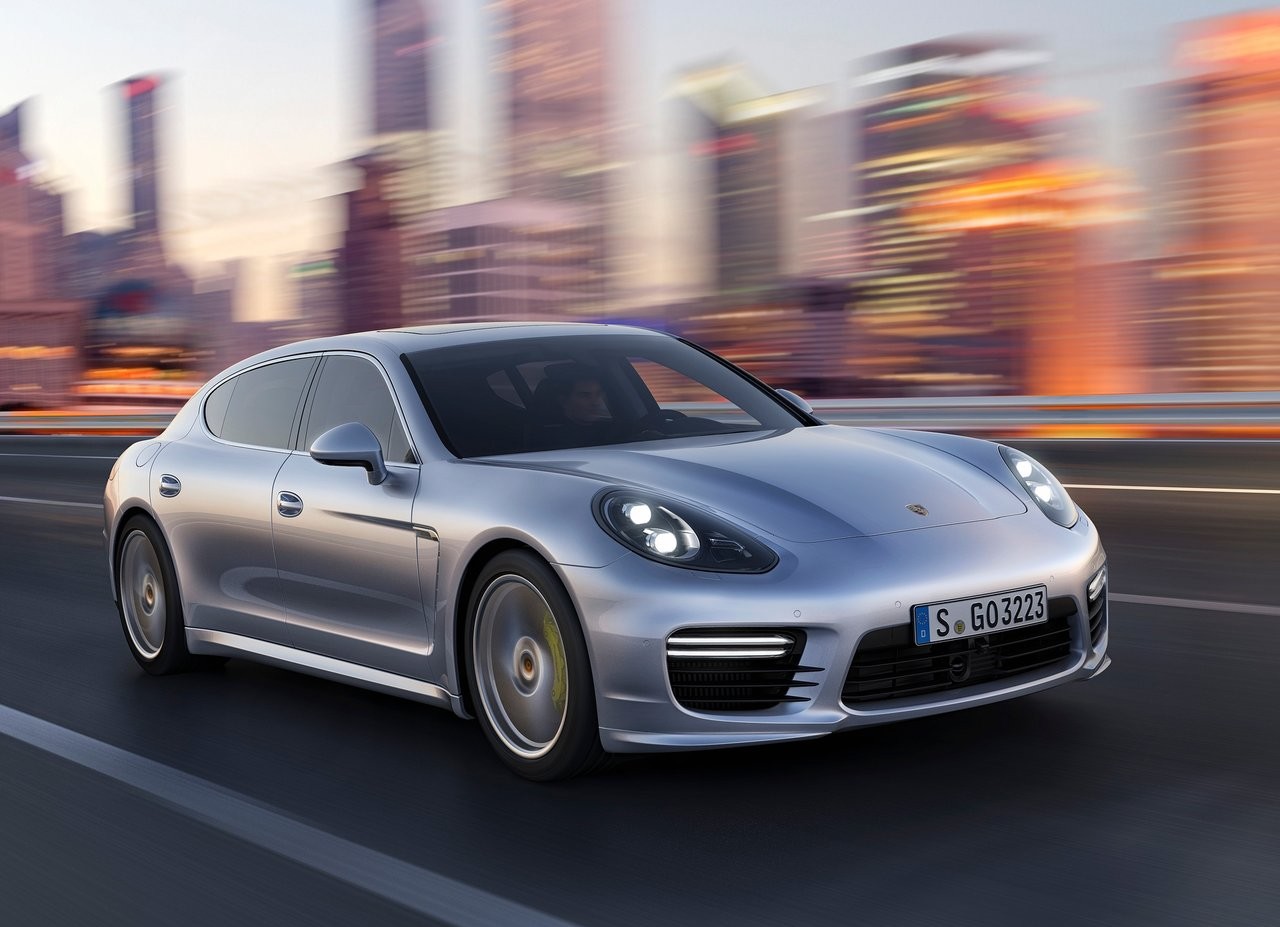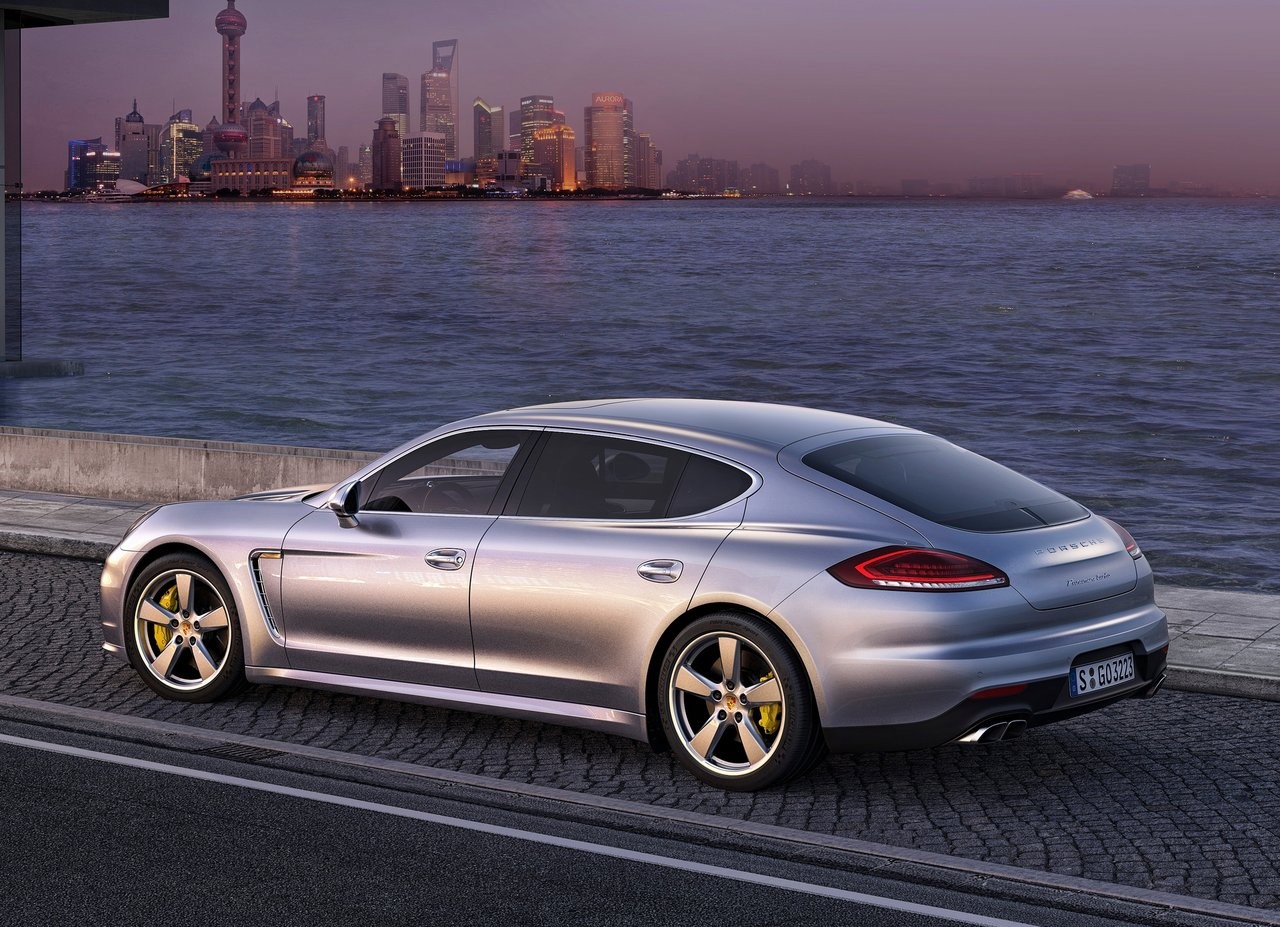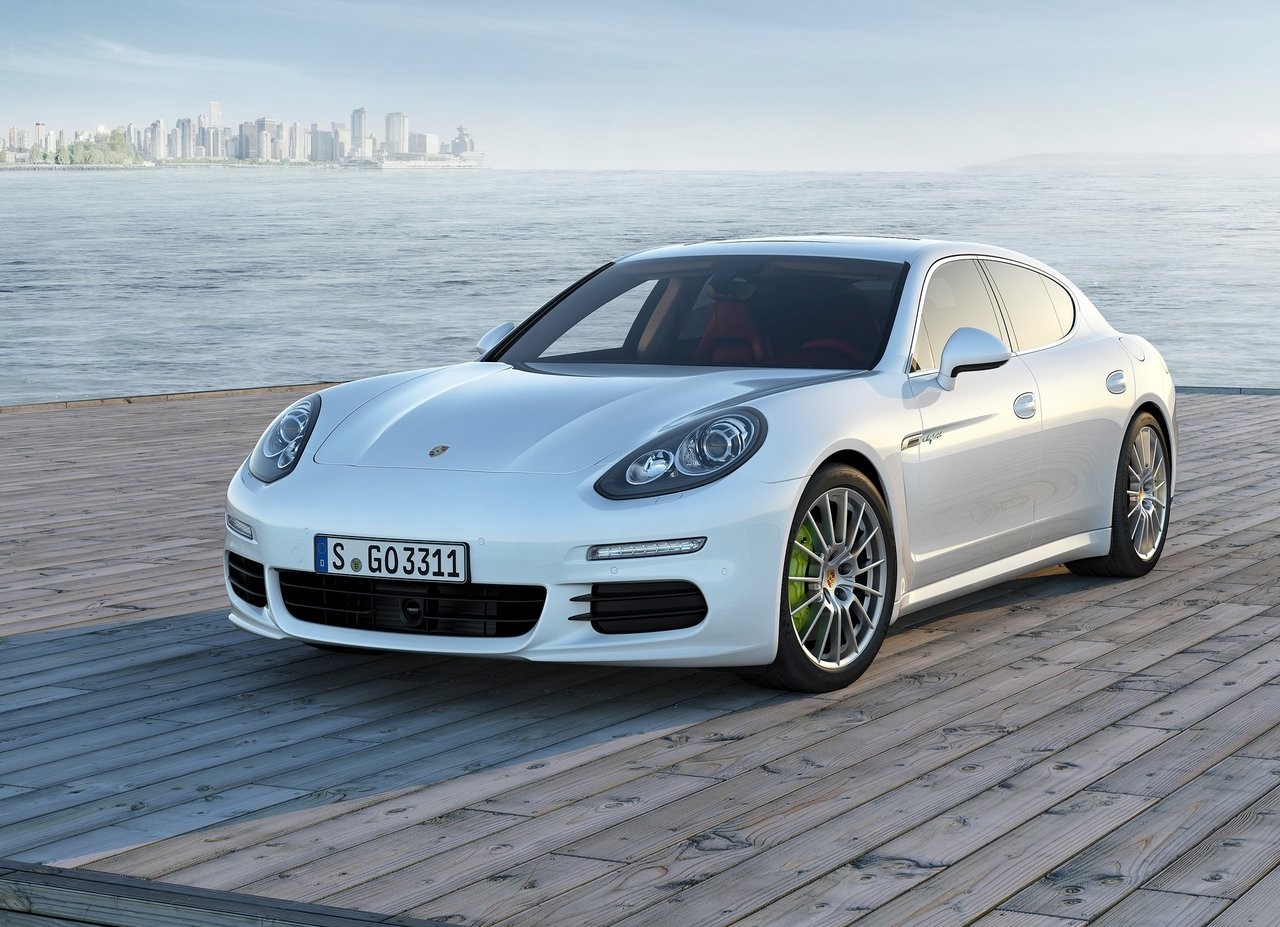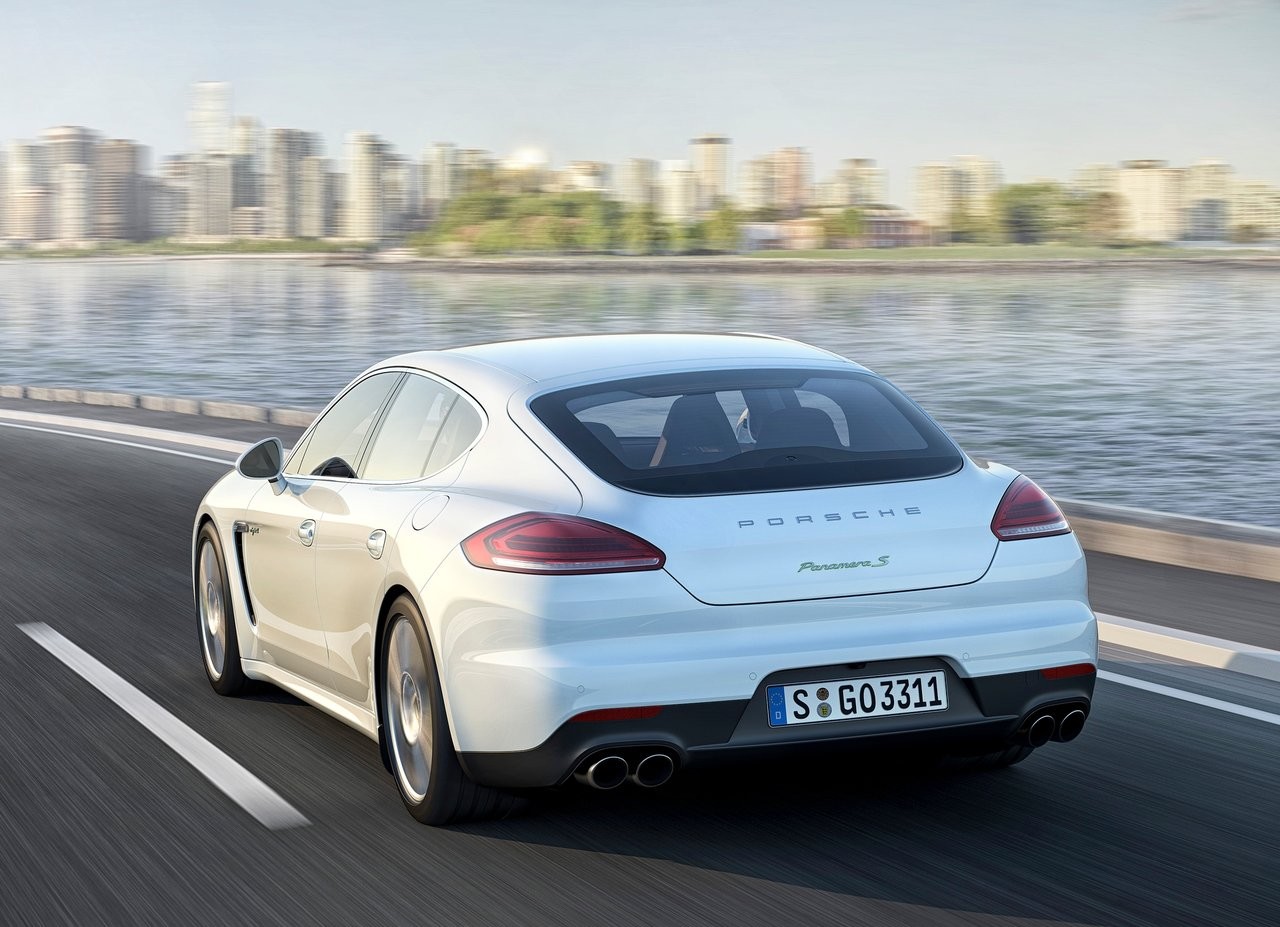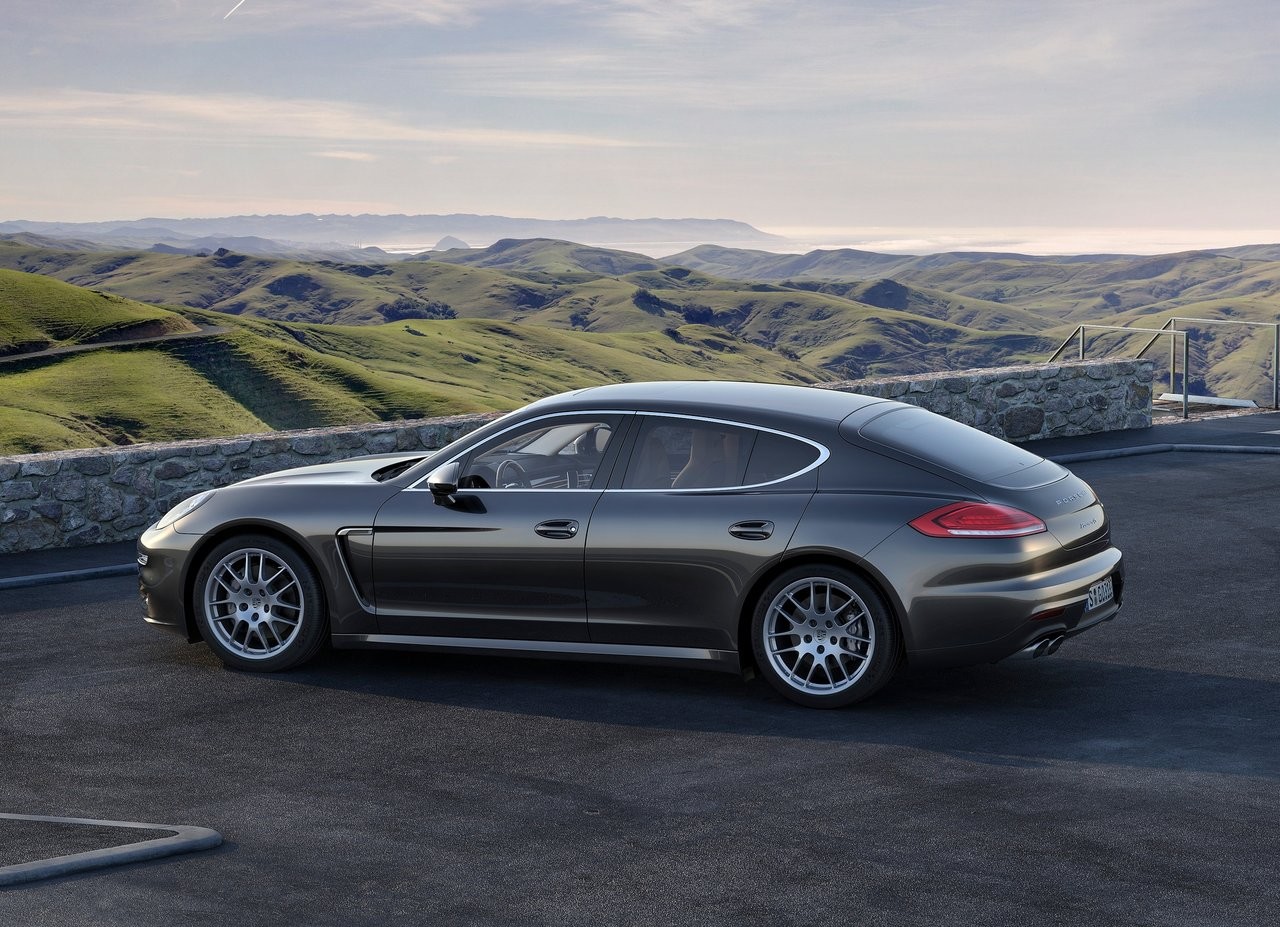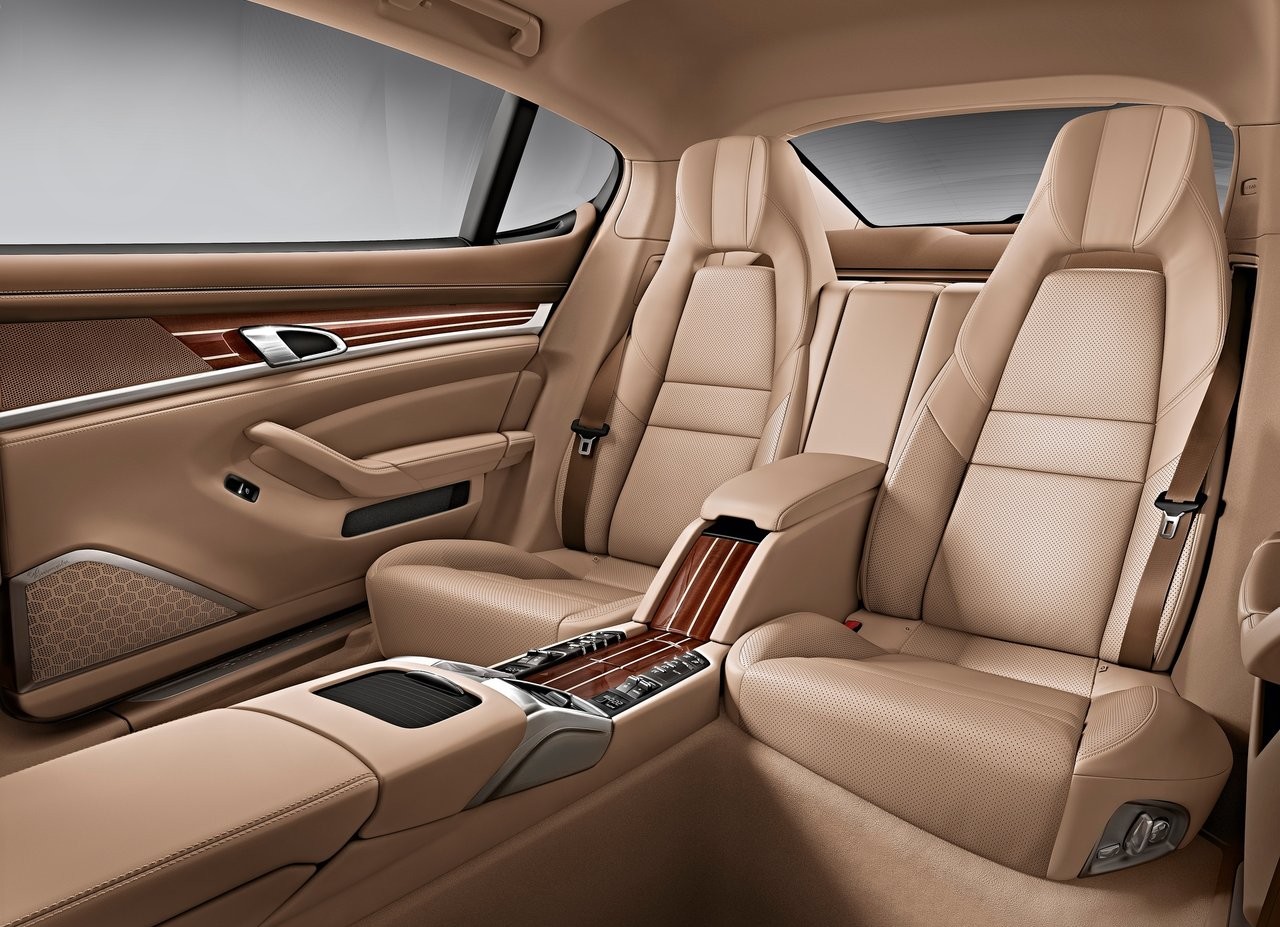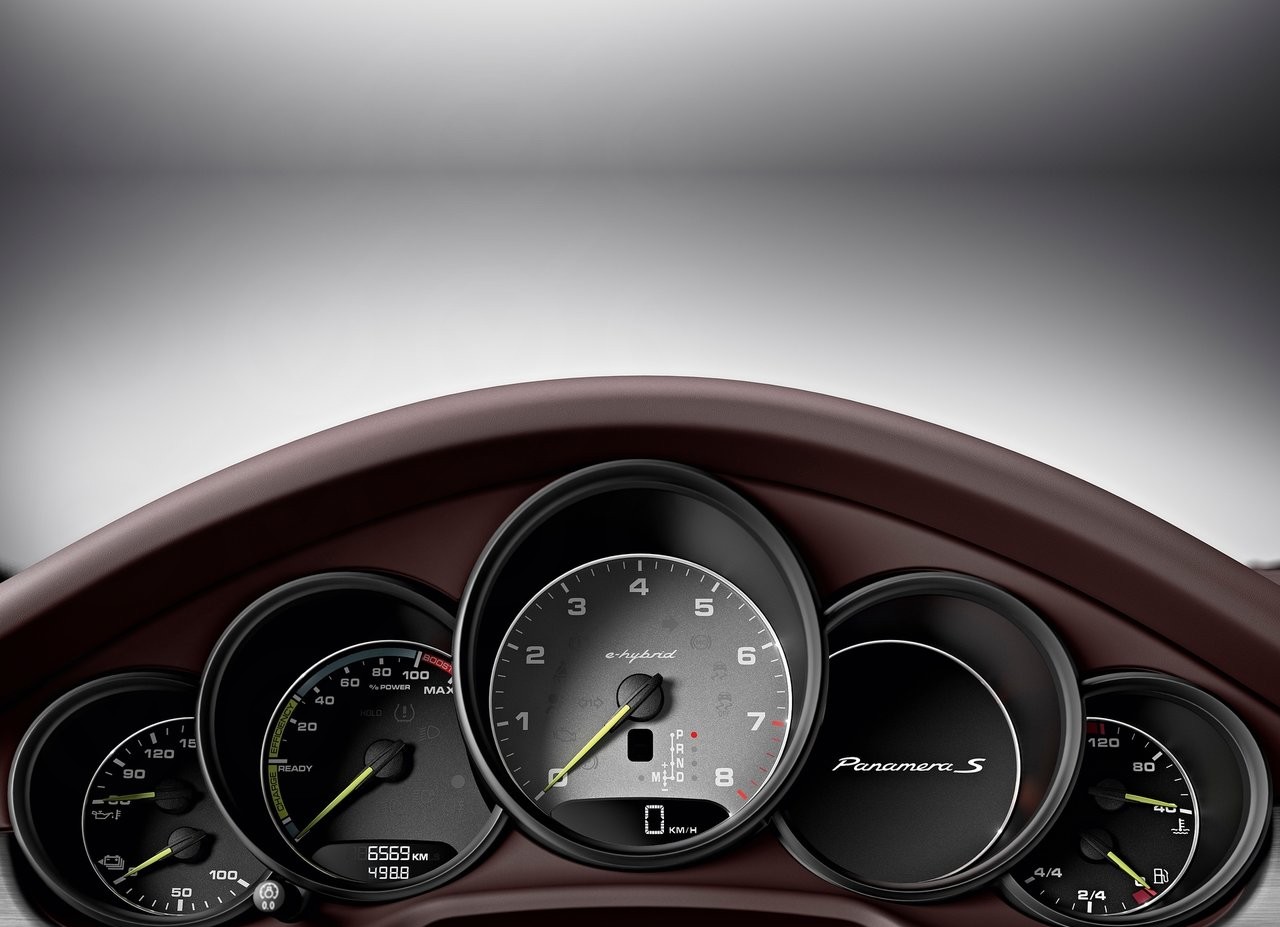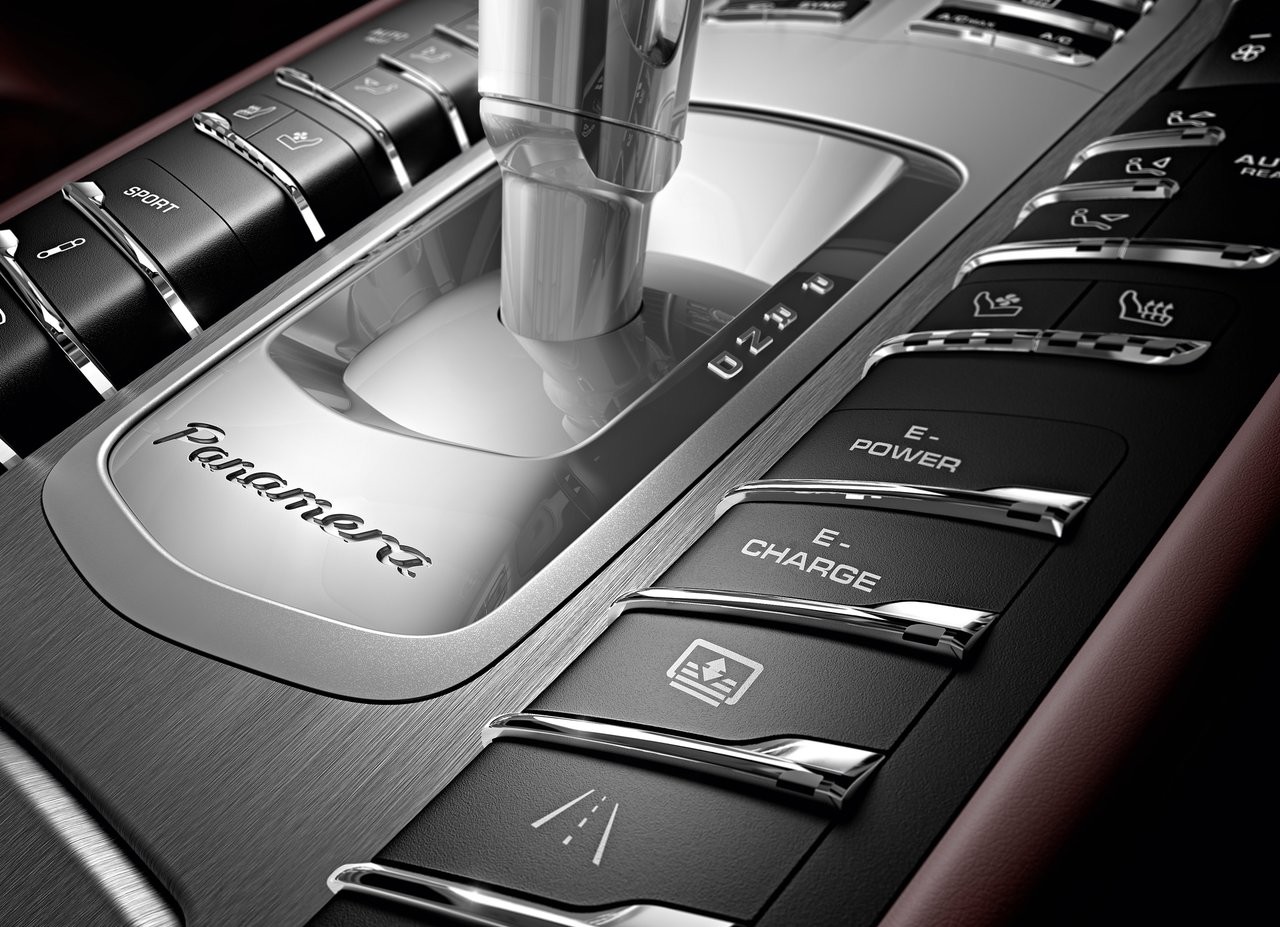
- Balanced chassis makes for excellent dynamics
- Quiet, well-insulated cabin
- High standard of interior fit and finish
- Improved ride comfort for 970.II Panamera
- Accurate – albeit light – steering provides good feedback
- Weight blunts agility
- Sheer width can make for awkward manoeuvring
- Driving experience lacks involvement of Porsche 997 911 Coupe
- Ungainly styling
Review: Porsche 970.I Panamera (2009-13)
Overview
Released in October 2009, the Porsche 970 Series I (970.I) Panamera was a four-seat liftback. Manufactured in Leipzig, Germany, the 970 Panamera was initially available with a 4.8-litre direct-injection V8 petrol engine, in naturally aspirated and turbocharged form (the Panamera S, 4 S and Turbo variants). In July 2010, the range was expanded with models powered by a 3.6-litre direct-injection petrol engine for the Panamera and Panamera 4 models. In the second half of 2011, the range was further expanded with the introduction of S Hybrid, Diesel and Turbo S variants (in August, September and October, respectively). In April 2012, the Panamera GTS was released.
The Diesel variant and all models fitted with the double clutch transmission (DCT, or PDK) transmission featured an ‘Auto Start-Stop’ system which could automatically shut-down the engine when the car came to rest and restart when the driver released the brake.
Dimensions and suspension
The Panamera was 4970 mm long, 1931 mm wide, 1418 mm tall and had a 2920 mm long wheelbase.
The Panamera had double wishbone front suspension, multi-link rear suspension and the Porsche Active Suspension Management (PASM) system which consisted of continually variable dampers and three selectable control maps: Comfort, Sport and Sport Plus. In the sport modes, the Panamera provided greater throttle response, faster steering ratios, the double clutch transmission would hold gears for longer when accelerating and downshift earlier and the Auto Start-Stop function was disabled; for the four-wheel drive models, more torque was also directed to the rear wheels.
| Variant | Years | Drive | Engine | Trans. | Peak power | Peak torque |
|---|---|---|---|---|---|---|
| N/A | 2010-13 | RWD | 3.6-litre M46.20 petrol F6 | 7sp DCT | 220 kW at 6200 rpm | 400 Nm at 3750 rpm |
| S | 2009-10 | RWD | 4.8-litre M48.20 petrol V8 | 6sp man. | 294 kW at 6500 rpm | 500 Nm at 3500-5000 rpm |
| 2009-13 | RWD | 4.8-litre M48.20 petrol V8 | 7sp DCT | |||
| 4 | 2010-13 | 4WD | 3.6-litre M46.20 petrol F6 | 7sp DCT | 220 kW at 6200 rpm | 400 Nm at 3750 rpm |
| 4 S | 2009-13 | 4WD | 4.8-litre M48.20 petrol V8 | 7sp DCT | 294 kW at 6500 rpm | 500 Nm at 3500-5000 rpm |
| GTS | 2012-13 | 4WD | 4.8-litre M48.40 petrol V8 | 7sp DCT | 316 kW at 6700 rpm | 520 Nm at 3500 rpm |
| Turbo | 2009-13 | 4WD | 4.8-litre M48.70 twin-turbo petrol V8 | 7sp DCT | 368 kW at 6000 rpm | 700 Nm at 2250-4500 rpm |
| Turbo S | 2011-13 | 4WD | 4.8-litre M48.70 twin-turbo petrol V8 | 7sp DCT | 405 kW at 6000 rpm | 750 Nm at 2250-4500 rpm |
| Diesel | 2011-13 | RWD | 3.0-litre CRC turbo-diesel V6 | 8sp auto | 184 kW at 3800-4400 rpm | 550 Nm at 1750-2750 rpm |
| S Hybrid | 2011-13 | RWD | 3.0-litre CGE s/charged petrol V6 | 8sp auto | 245 kW at 5500-6500 rpm | 440 Nm at 3000-5250 rpm |
| Electric motor | 34 kW at 0-1150 rpm | 300 Nm at 0-1150 rpm | ||||
| Combined: | 279 kW at 5500-6500 rpm | 580 Nm at 1000 rpm | ||||
4WD system
The Panamera’s four-wheel drive system utilised an electronically controlled multiple-plate clutch – integrated in the gearbox – to distribute torque between the front and rear axles in a fully variable manner. As such, there was no pre-determined torque split, with the Porsche Traction Management (PTM) system continually monitoring driving conditions. For example, if the rear wheels started to spin when accelerating, the multiple-plate clutch would intervene to direct more power to the front wheels; when cornering, the delivery of power to the front wheels was monitored to provide optimum lateral stability. The all-wheel drive system also included an automatic brake differential which, if the drive wheels began to spin, would brake the individual wheel with the higher level of slip.
Safety equipment
Standard safety equipment for the 970.I Panamera included two-stage dual front airbags, front knee airbags, seat-mounted front side airbags, full-length curtain airbags (i.e. for front and rear occupants), ABS, electronic brake force distribution, electronic stability control, traction control, trailer stability control, seatbelt pretensioners for the front and outer rear seats and front seatbelt load limiters. In the event of a collision with a pedestrian, the bonnet would also rise to cushion the pedestrian’s subsequent impact, while there were also two additional braking functions:
- ‘Brake Pre-Filling’, which closed the air gap between the brake pads and discs when sudden accelerator pedal lift-off was detected (improving initial brake performance); and,
- ‘Brake Assistant’, which detected when brake pedal pressure was applied quickly, but not with full force, and increased braking assistance.
Features: Panamera, Panamera Diesel, Panamera 4
Standard features for the Panamera, Panamera Diesel and Panamera 4 included 18-inch alloy wheels, a fourteen speaker Bose sound system with subwoofer, six disc CD/DVD player and auxiliary inputs (MP3/USB/iPod), satellite navigation with seven-inch colour screen, dual-zone climate control air conditioning, 14-way power adjustable front seats, front seat memory settings, cruise control, bi-xenon headlights with washers, rain-sensing wipers, front and rear parking sensors, front fog lights, Bluetooth connectivity, split and flat folding rear seats, a leather-wrapped steering wheel, remote central locking, power windows and mirrors, heated and power folding mirrors, a height and reach adjustable steering wheel, power-operated park brake, ambient lighting, power sunroof, four 12 volt power outlets, trip computer, motion-sensing alarm and immobiliser. The standard braking package consisted of 360 mm front discs with six-piston aluminium monobloc fixed calipers and 330 mm rear discs with four-piston aluminium monobloc fixed calipers; all discs were inner-vented and grooved.
Features: Panamera S and 4 S
The Panamera S and Panamera 4 S were further equipped with front seat power lumbar adjustment, heated front seats, directional bi-xenon headlights, reversing camera, a power adjustable steering wheel with memory settings, tyre pressure monitoring and a two-way rear spoiler.
Features: Panamera GTS
The Panamera GTS was positioned between the 4 S and Turbo variants. Compared to the Panamera 4S, the GTS was powered by a modified 4.8-litre V8 engine which had higher tension valve springs, new camshafts and a revised inlet system for increased air flow beyond 3500 rpm; the inlet system had a ‘Sound Symposer’ which could direct intake noise into the interior when the ‘Sport’ button was pushed. The GTS was also fitted with 19-inch alloy wheels with 255/45 front and 285/40 rear tyres, adaptive air suspension (which provided an add-16 air volume in each spring to vary the spring rate), a 10mm-lower ride height and an upgraded braking package which consisted of composite brake discs made of a light aluminium brake cover connected with a grey-case iron friction ring; the front discs had a 390 mm diameter and the rear discs measured 350 mm.Compared to the Panamera 4 S, the GTS featured eighteen-way power adjustable and ventilated front seats, Alcantara headlining and Porsche’s ‘Sport Chrono Package’ which included a Sport Plus mode, stopwatch on the dashboard, a performance display with lap-timer and Launch Control. Visually, the GTS could be identified by its wider front air intakes and a four-way adjustable rear spoiler (as per the Turbo and Turbo S).
Features: Panamera Turbo and Turbo S
Compared to the GTS, the Panamera Turbo omitted the Sound Symposer, but featured heated rear seats and a proximity key. Furthermore, the Turbo was also fitted with:
- Porsche Dynamic Chassis Control (PDCC), which minimised bodyroll through corners and included an electronically controlled rear differential with a variable locking effect;
- Porsche Torque Vectoring (PTV) Plus, which varied the torque split between the rear wheels in combination with the rear differential; and,
- An Overboost function within the Sports Plus mode which temporarily increased turbocharger pressure on downshifts or when the throttle was quickly applied to increase peak torque to 770 Nm from 3000-4000 rpm.
The Panamera Turbo S was distinguished by its 20-inch ‘Turbo II’ alloy wheels, two-tone leather interior, sports exhaust, daytime driving lights (four LEDs spaced out around the two round headlights) and Sport Chrono Package (see ‘Features: Panamera GTS’, above). In overboost mode, peak torque for the Turbo S increased to 800 Nm.
Panamera S Hybrid
Released in October 2011, the S Hybrid variant was fitted with a 34 kW electric motor between the engine and transmission which was powered by 1.7 kWh Sanyo-sourced nickel-metal batteries which powered the climate control, water and transmission pumps, braking and steering systems. Furthermore, the electric motor had an energy recuperation mode in which the motor would recharge under braking.
The Panamera S Hybrid could travel for 2km at speeds of up to 85km/h in its all-electric ‘e-Power’ mode if the battery was at least 30 per cent charged and could also shut-down the engine when coasting. The battery was also covered by a 300,000km or 12 year warranty (whichever expired first).
Brochures
Review: Porsche 970.II Panamera (2013-16)
Overview
Released in August 2013, the 970 Series II (970.II) Panamera introduced several changes:
- New 3.0-litre twin-turbo V6 petrol engines for the S and 4 S variants (replacing 4.8-litre V8 engines);
- The S Hybrid was replaced by the plug-in S E-Hybrid which had a 70 kW electric motor and a 9.4 kWh litihium-ion battery (previously nickel metal hydride); and,
- For 2014 Diesel variants, a new 220 kW turbo-diesel engine.
Visually, the 970.II Panamera could be identified by its more prominent ‘linework’ at the front, larger air intakes, an increasingly swept-back rear window (for an extended silhouette), new bootlid and a wider rear window and spoiler.
Panamera S E-Hybrid
The Panamera S E-Hybrid had a significantly larger battery than its S Hybrid predecessor and, when connected to an industrial outlet, could be charged in around two and a half fours via the integrated on-board charger and the standard Porsche Universal Charger. In its all-electric mode, the S E-Hybrid had an estimated range of 18-36 km. Nonetheless, the S E-Hybrid could accelerate from rest to 100 km/h in 5.5 seconds and had a top speed of 270 km/h.
| Variant | Years | Drive | Engine | Trans. | Peak power | Peak torque |
|---|---|---|---|---|---|---|
| N/A | 2013-16 | RWD | 3.6-litre CWA petrol F6 | 7sp DCT | 228 kW at 6200 rpm | 400 Nm at 3750 rpm |
| S | 2013-16 | RWD | 3.0-litre CWD twin-turbo petrol V6 | 7sp DCT | 309 kW at 6000 rpm | 520 Nm at 1750-5000 rpm |
| 4 | 2013-16 | 4WD | 3.6-litre CWA petrol F6 | 7sp DCT | 228 kW at 6200 rpm | 400 Nm at 3750 rpm |
| 4 S | 2013-16 | 4WD | 3.0-litre CWD twin-turbo petrol V6 | 7sp DCT | 309 kW at 6000 rpm | 520 Nm at 1750-5000 rpm |
| Turbo | 2013-16 | 4WD | 4.8-litre CWB twin-turbo petrol V8 | 7sp DCT | 382 kW at 6000 rpm | 700 Nm at 2250-4500 rpm |
| Turbo S | 2013-16 | 4WD | 4.8-litre CWC twin-turbo petrol V8 | 7sp DCT | 419 kW at 6000 rpm | 750 Nm at 2250-5000 rpm |
| Diesel | 2014-16 | RWD | 3.0-litre CWJ turbo-diesel V6 | 8sp auto | 221 kW at 3800-4000 rpm | 650 Nm at 1750-2750 rpm |
| S E-Hybrid | 2013-16 | RWD | 3.0-litre CGE s/charged petrol V6 | 8sp auto | 245 kW at 5500-6500 rpm | 440 Nm at 3000-5250 rpm |
| Electric motor | 70 kW | 310 Nm | ||||
| Combined: | 306 kW | N/A | ||||
Safety equipment
Compared to its 970.I predecessor, standard safety equipment for the 970.II Panamera was extended to include rear side airbags.
Features
Standard features for the Panamera, Panamera 4 and Panamera S E-Hybrid included 18-inch alloy wheels with 245/50 ZR18 front and 275/45 ZR18 rear tyres, a fourteen speaker sound system with a CD/DVD player (eleven speakers for the S E-Hybrid), MP3-compatibility and auxiliary inputs (3.5 mm/USB), an in-built hard disk drive (HDD), satellite navigation system, Bluetooth mobile phone connectivity and audio streaming, dual-zone climate control air conditioning, leather upholstery, power adjustable and heated front seats, a cooled glovebox, cruise control, bi-xenon headlights with washers, daytime LED running lights, rear LED lights, automatic headlights, rain-sensing wipers, front and rear parking sensors, a reversing camera, a leather-wrapped steering wheel with gearshift paddles, split and folding rear seats, remote central locking, power windows, power adjustable and heated door mirrors with folding function, tilt and telescopic steering column adjustment, driver’s seat memory settings, illuminated vanity mirrors, courtesy lamps, 12 volt power sockets, an electrochromatic rear view mirror, a trip computer, motion-sensing alarm and an immobiliser.
The Panamera S and Panamera 4 S were further equipped with 19-inch alloy wheels with 255/45 ZR19 front and 285/40 ZR19 rear tyres, ventilated front seats with memory settings, directional headlights, a power adjustable steering column, additional memory settings (for the steering wheel and door mirrors) and tyre pressure monitoring; the Panamera S and 4S were also fitted with adaptive air suspension.
Beyond this, the Panamera GTS added contoured front sports seats with active bolsters, Alcantara seat trim, carbon fibre interior trim and alcantara headlining. The Panamera Turbo was differentiated by its 20-inch alloy wheels with 255/40 ZR20 front and 295/35 ZR20 rear tyres, leather seats, heated rear seats, a proximity key and woodgrain interior trim.
May 2015 update
In May 2015, standard features for the Panamera S, 4S, GTS and S E-Hybrid variants were extended to include digital radio (DAB+) and LED headlights with the Porsche Dynamic Lighting System Plus (PDLS+). The Panamera Turbo and Turbo S also received digital radio tuning, but not the LED headlights.
Related links
